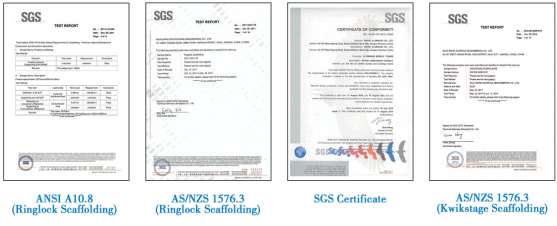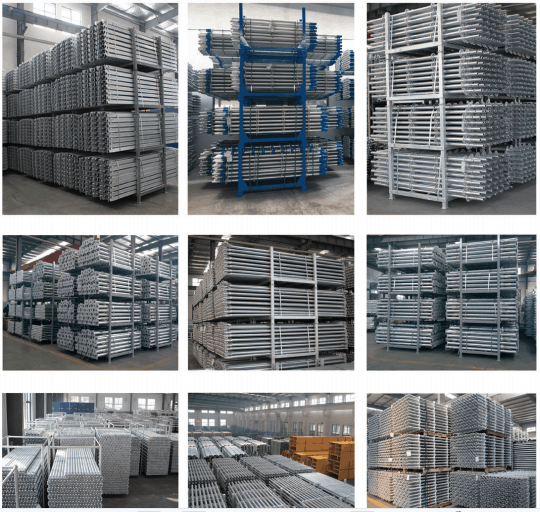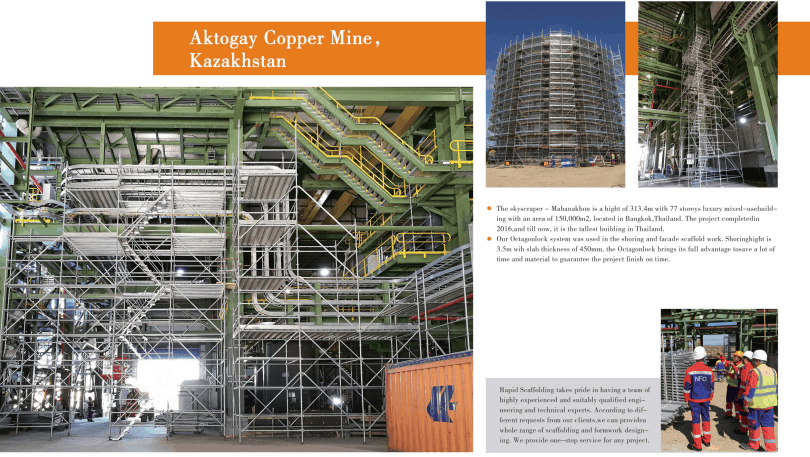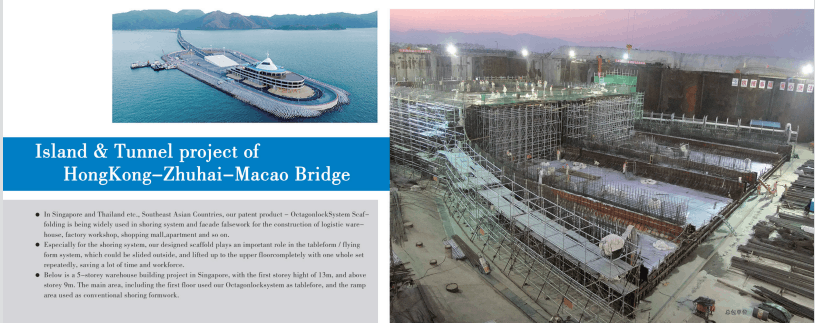
Haky Scaffolding
Haky scaffolding is an invaluable tool for any constructions and projects that require reliable climbing access, whether it be for repairs, inspections, or maintenance. Rapid is the top haky scaffolding manufacturer and supplier in China, providing high-quality haky scaffolding systems both quickly and efficiently to customers all around the world. With haky’s safety proven track record, construction teams can have peace of mind that their projects are being completed correctly and securely when using haky scaffolding systems. If you have been searching for haky scaffolding for your project, then look no further than Rapid; contact us today to see how we can best meet all of your haky needs!
Quality, safety and cost efficiency are our commitments .We are sincere partner to all our clients, irrespective of their sizes. All over the world.


Rapid scaffolding has rich experience and advanced automatic equipment, which can provide scaffolding customized production to meet different needs.

Rapid represent the safety and qualified scaffolding via our construction projects.
Feel the Quality via our products. We improve them always.


Rapid Video
Why Choose Rapid?
• High quality scaffolding at competitive price
• Customized standards to meet the specific needs of any work site
• Commitment to safety and durability in all products
• Innovation in design for a better customer experience
• Scaffold services available 24 hours/day, 7 days a week
• Accreditation from EN10901 and ISO3834 for quality assurance
• Certified as work-safe and compliant with all scaffold regulations
• Wide variety of scaffolds available in different sizes to suit all needs
• Comprehensive training provided on how to use the scaffolds safely

Haky Standard
Tube diameter: 48mm, Steel Grade: Q235, Surface treatment: Hot dip galvanized
| Code | Length |
| HSS1500 | 1500mm |
| HSS2000 | 2000mm |
| HSS3000 | 3000mm |

Haky Ledger
Tube diameter: 34mm, Steel Grade: Q235, Surface treatment: Hot dip galvanized
| Code | Length |
| HSL300 | 3000mm |

Haky Single Tube Beam
Tube diameter: 48.3mm, thickness: 3mm, Steel Grade: Q235, Surface treatment: Powder Coated
| Code | Length |
| HSSTB160 | 1605mm |

Haky Guardrail Frame
Tube diameter: 34mm, Steel Grade: Q235, Surface treatment: Hot dip galvanized
| Code | Length |
| HSGF210 | 2100mm |
| HSGF300 | 3000mm |
HAKI Scaffolding – The All-Around FAQ Guide
Are you interested in learning more about HAKI scaffolding? Do you have the intention of getting this specific scaffolding system in the future? If you answered yes to both questions, then, you are where you need to be.
In this FAQ guide, we will give you the ultimate guide in understanding HAKI scaffolding from A to Z. We’ll unravel the most important and most crucial information about HAKI scaffolding that you need to know before you decide on getting one!
What is a Scaffolding System Used For?
A scaffolding system, otherwise known as scaffold, is a temporary structure that’s utilized to support materials, crew members or workers, as well as equipment by elevating the working area. This gives them access to heights and reaches that can’t be reached by standard heights.
Scaffolds are typically used for construction, maintenance, repair, bridging, and even renovation of structures.
https://youtu.be/oiglnKsQcoQ?si=YMvOFmHK4b3b6tuI
What is HAKI Scaffolding?
HAKI scaffolding is a scaffolding structure that uses a hook-on lock and capture style of security, providing the best and maximum type of security and safety to workers and materials that would go on the scaffold.
This structure/style was developed to make sure that the people and materials are safe even when the terrain or the environment is challenging.
Is HAKI Scaffolding Suspended Scaffolding?
The first HAKI scaffolding systems only leveraged suspended scaffolds. However, as time went on, HAKI scaffolding structures also included supported scaffolds to be able to accommodate projects that were made and established from the ground.
Check out this OSHA Regulation about the types of scaffolds here!
What is a HAKI Stair?
A HAKI Stair is a modular and adjustable stair system designed for construction. HAKI, the manufacturer of the staircase and the entire HAKI scaffolding system, is a well-known and reputable provider of access solutions.
The HAKI Stairs are known for their versatility and overall flexibility, partnered with ease of installation. These stairs are manufactured and produced with high-quality materials, allowing durability and stability on construction sites.
Overall, a HAKI Stair serves as a reliable and practical component in the realm of construction access solutions.
What is Special Scaffolding?
Special scaffolding is the scaffolding structure that’s often used for specialized industries and applications. Oftentimes, the projects and sites for special scaffolds are those that are higher than standard heights or special situations like silos, tanks, and specialized aircraft.
HAKI Scaffold Components
The following are the parts or components of HAKI scaffolding systems.
Standards
Standards are the vertical components that form the entire scaffolding framework. They are the ones that provide the structural support for the entire scaffold.
Ledgers
Standards are the vertical components; ledgers are the horizontal ones. They connect the standards and help enhance the scaffold’s stability via distributing weight evenly.
Diagonal Braces
They are similar to standards and ledgers. However, instead of being either horizontal or vertical, they are angled. Diagonal braces help reinforce and stabilize the scaffold structure even better, preventing slanting movement.
Transoms
Transoms are horizontal elements that support boards and platforms. They create a safe and secure working platform for workers and for materials by locking and securing them in place.
Decking
These are the platforms where workers stand or place materials during the project.
NOTE: Some of the terminology here might seem different from the method, but, do know that they’re just all the same.
How Do You Erect a HAKI Scaffold?
Setting up or erecting a HAKI scaffold is closely similar to how you would erect other scaffolding structures and systems. For the most part, the initial step would be by establishing the base or foundation, working your way up.
Here’s a detailed set of instructions of how the general method of HAKI scaffolding is erected.
Step #1: Identify the Scaffolding Site/Location
The first step is to know and identify where you would build the scaffolding up. This is an integral step in making sure that you’re establishing an extensively secure and safe scaffold. The location must be:
- Stable and secure
- Free from any unwanted walls and structures
Once done, you now need to go into the next step, which is to…
Step #2: Set-Up the Base or Foundation
The next step is to make sure that you assemble the erection brace, as well as set it on the location where you wanted it to be placed. Ensure that the measurements are exact to avoid accidents like components falling off.
Step #3: Install the Guard Frames and Beams
After setting the foundation up, the next step would be to install the guard frame and riders. These are components that traditional scaffolding systems lack.
Guard frames help protect the sides of the scaffolding structure, preventing accidental falls of materials and equipment, as well as workers.
Then, set the horizontal beams up for the boards or the walking platform. The main purpose of the beams would be to hold the platform and to ensure that it’s stable and secure.
Step #4: Set up the Boards
Then, set the boards up. Make sure that the boards are clamped to the beams properly, ensuring that it is not wobbly or moving uncontrollably. The beams would have insertion units where they’re locked and clamped tightly.
Step #5: Hook It All Up
For the last step, hook ledgers onto the brackets, pushing the outer part of the scaffold. Once done, work your way up and do the same exact process onto the third and fourth levels of your HAKI scaffold.
NOTE: The process of erecting or establishing a suspended HAKI scaffold and a supported HAKI scaffold aren’t far from one another. The differences would lie on the components used, as well as the tasks involved.
Check this video out that discuss how you can set up or build a bay with HAKI scaffolding!
https://youtu.be/peaWOHOc1ZE?si=V777WiQENtWqE2OE
Can You Get HAKI Scaffolding For Your Project?
Yes, HAKI scaffolding is just one of the many types and kinds of scaffolding systems you can get for your project. Wherever you are, there will be a lot of options for scaffolding and HAKI is one of them. If you’re looking for the ease of use and the overall complexity of the scaffold system, HAKI might just be your best bet.
Where is the Best Place to Get HAKI Scaffolding?
Rapid Scaffolding, China’s leading scaffolding formwork designer and manufacturing expert, is the best when it comes to HAKI scaffolding. Our expertise and rich experience allowed us to offer some of the country’s most advanced HAKI scaffolding systems.
Our team has wide area of excellence and influence in the scaffolding industry. Contact us today and get a free estimate of the HAKI scaffolding you need!
Other than our HAKI scaffolding offers, you can also count on us if you need help with cuplock scaffolding, Kwikstage scaffolding, shoring frames, and many more!
Contents
- Rapid Video
- Why Choose Rapid?
- Haky Standard
- Haky Ledger
- Haky Single Tube Beam
- Haky Guardrail Frame
- HAKI Scaffolding – The All-Around FAQ Guide
- What is a Scaffolding System Used For?
- What is HAKI Scaffolding?
- Is HAKI Scaffolding Suspended Scaffolding?
- What is a HAKI Stair?
- What is Special Scaffolding?
- HAKI Scaffold Components
- Standards
- Ledgers
- Diagonal Braces
- Transoms
- Decking
- How Do You Erect a HAKI Scaffold?
- Step #1: Identify the Scaffolding Site/Location
- Step #2: Set-Up the Base or Foundation
- Step #3: Install the Guard Frames and Beams
- Step #4: Set up the Boards
- Step #5: Hook It All Up
- Can You Get HAKI Scaffolding For Your Project?
- Where is the Best Place to Get HAKI Scaffolding?
- Get A Quote Now !
